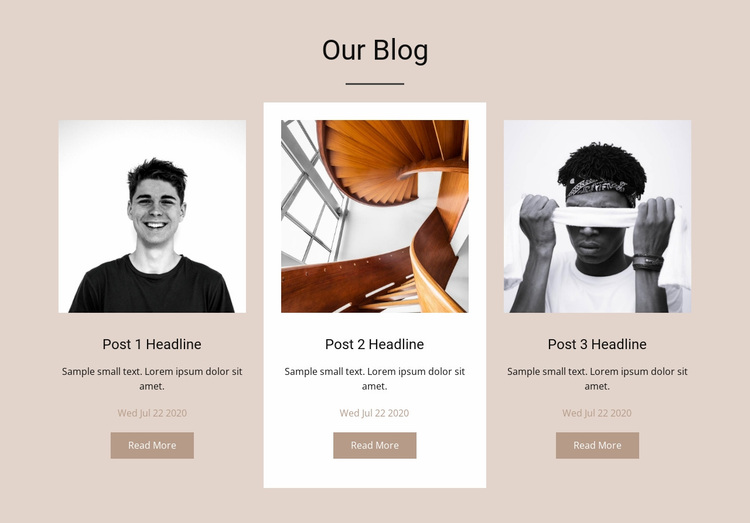Top Tips for Developing an Impactful Site Style That Converts
To achieve this, one have to think about a variety of factors, consisting of understanding the target audience, prioritizing individual experience, and optimizing for mobile systems. The strategic usage of compelling call-to-actions and a distinct visual pecking order plays an important role in guiding individuals through their trip.

Understand Your Target Market
Recognizing your target market is basic to reliable internet site layout, as it prepares for developing an interesting customer experience. Recognizing who your customers are, including their demographics, preferences, and behaviors, makes it possible for designers to customize the site's material, layout, and functionality to satisfy certain requirements.
Conducting complete marketing research is vital in this process. Surveys, meetings, and analytics can offer important understandings right into user expectations and pain points. By assembling this information, developers can develop individual identities that stand for different segments of the audience, ensuring that style choices are informed and pertinent.
In addition, understanding the target audience aids in selecting suitable design components such as color pattern, typography, and imagery that resonate with users. A website that talks directly to its audience promotes a feeling of connection and trust fund, encouraging longer check outs and greater conversion rates.
Ultimately, a user-centered method to internet site design not just boosts user satisfaction yet additionally supports business purposes by driving engagement and commitment. By prioritizing the demands and preferences of the target audience, a site can effectively serve its objective and achieve wanted end results.
Prioritize Individual Experience
To enhance the overall effectiveness of a site, focusing on user experience (UX) is vital (Website Design). A well-designed UX makes certain that visitors can navigate the site effortlessly, locate details rapidly, and involve with material meaningfully. This leads to enhanced customer fulfillment and higher conversion prices
Begin by executing instinctive navigation. Menus should be rationally structured, permitting individuals to situate crucial locations of the site with very little initiative. Uniformity in design components, such as color pattern and typefaces, cultivates knowledge, which is vital for preserving individual engagement.
Furthermore, consider the filling speed of your internet site. A hold-up of just a couple of secs can cause considerable drop-offs, as individuals are much less likely to wait for a slow-loading page. Improving photos and maximizing code can boost performance and keep visitors.
Furthermore, clarity in material discussion is crucial. Use concise, engaging language and break up text with visuals to improve readability. By prioritizing individual experience, you not just produce a more pleasurable environment for visitors but likewise reinforce your brand's reliability. Inevitably, an emphasis on UX is an investment in the lasting success of your web site.
Maximize for Mobile Devices
Maximizing for smart phones is critical in today's electronic landscape, where a boosting number of customers accessibility internet sites via smartphones and tablet computers. A mobile-friendly layout not only improves user experience yet additionally plays a substantial duty in boosting internet search engine positions. To achieve this, it is important to adopt a responsive design that instantly changes to different display sizes and orientations.

Packing rate is one more critical element; mobile customers are commonly less individual and expect quick accessibility to you can find out more information. Maximize images and leverage web browser caching to enhance efficiency. Lastly, test your site on several tools and screen resolutions to identify and correct any type of possible use issues. By prioritizing mobile optimization, you ensure that your site remains competitive and successfully involves a wider audience.
Usage Engaging Call-to-Actions
An internet site's performance often rests on its capability to lead visitors towards desired actions, making engaging call-to-actions (CTAs) important components of style. CTAs work as the essential points that route users to involve with the website, whether that means buying, registering for an e-newsletter, or downloading and install a source.
To create reliable CTAs, quality is paramount. Use succinct language that plainly connects the activity you desire the individual to take.
Additionally, take into consideration using directional signs, such as arrowheads or pictures, to assist users towards these buttons. By concentrating on these elements, services can substantially improve user involvement, driving conversions and inevitably attaining their web site's objectives.
Focus on Visual Hierarchy
Effective web site style counts heavily on a well-structured visual hierarchy that overviews customers through content perfectly. By arranging aspects in a fashion that prioritizes information, designers can enhance user experience and promote decision-making. This entails utilizing dimension, color, contrast, and spacing tactically to accentuate the most important elements of a website.
Making use of larger fonts for headings and subheadings establishes a clear difference in between various areas, enabling customers to check material easily. In addition, utilizing contrasting shades for switches and calls-to-action can capture customer interest and encourage interaction. Whitespace is another crucial element; it prevents clutter and allows customers to concentrate on key messages without disturbances.
Photos and graphics click must complement the text while also sticking to the well-known pecking order, strengthening the total message (Website Design). Consistency in style components, such as color pattern and typography, additional reinforces the aesthetic hierarchy, making navigation user-friendly

Final Thought
In conclusion, efficient web site layout necessitates a thorough understanding of the target audience, prioritization of user experience, and mobile optimization. Ultimately, a well-executed website style offers as an essential element in driving individual activities and achieving company objectives.